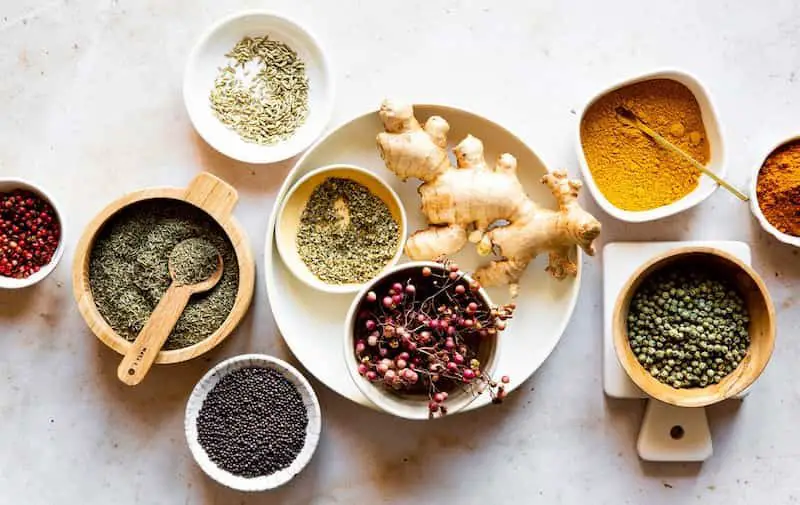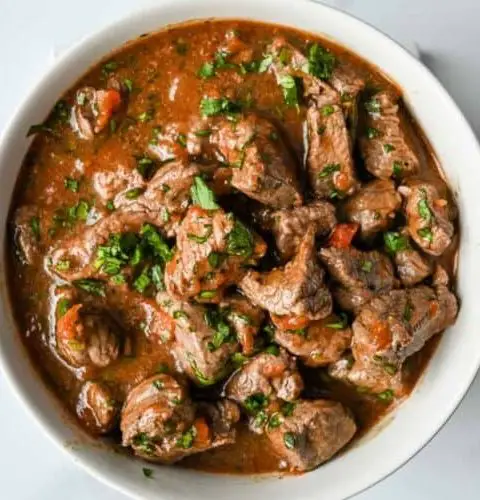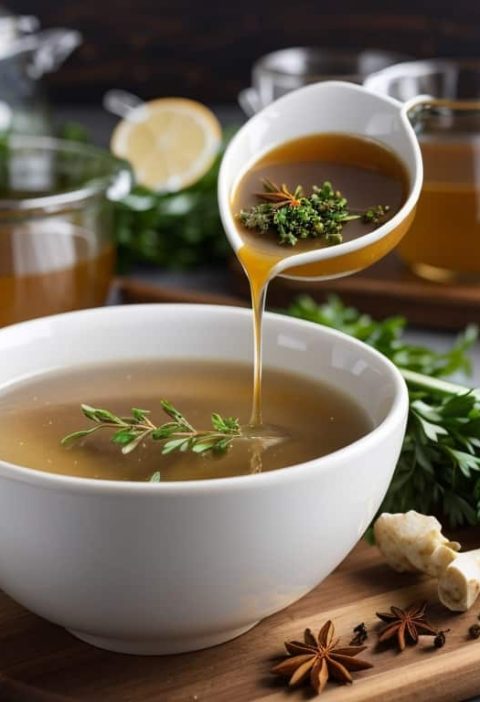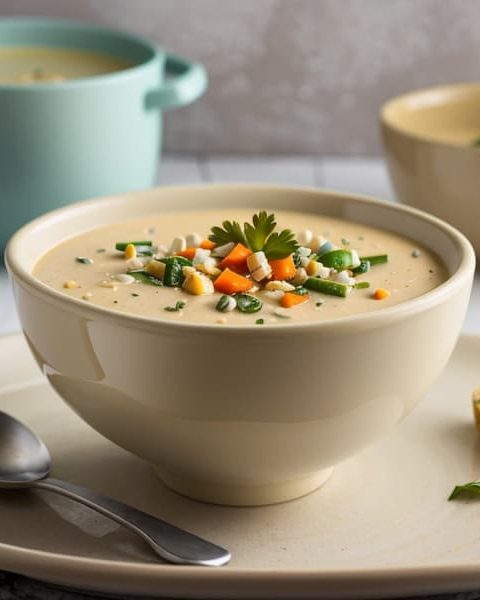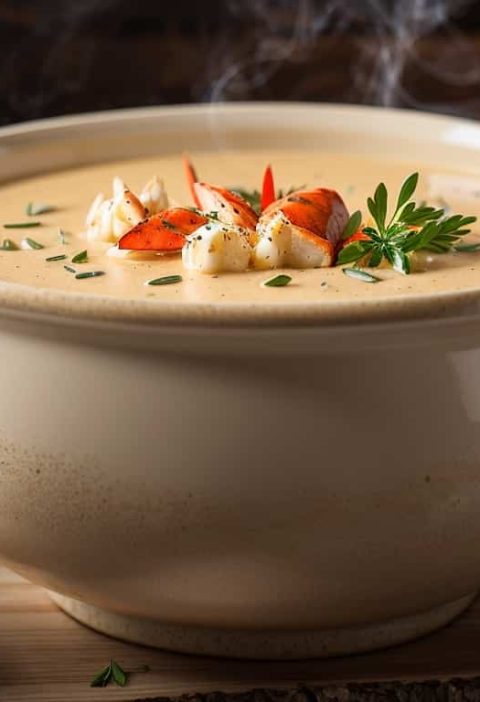Soups are a comforting, nourishing food that can be enjoyed year-round. When making vegetable soups, herbs and spices are essential for adding layers of flavor. The right blend of herbs and spices can transform a boring soup into a delicious, complex dish.
In this article, I will share 10 of my favorite herbs and spices to use in vegetable soups. These ingredients provide a range of complementary flavors – from the brightness of basil to the warmth of cumin. Whether you prefer light spring soups or hearty winter stews, incorporating these herbs and spices will take your soups to the next level.
Let’s get started!
Basil
Sweet basil is one of my top choices for vegetable soups. Its aroma is refreshing and floral, with slight licorice notes. When added to soups, basil imparts a fresh herbal flavor that brightens up any combination of vegetables.
I love using basil with tomatoes, onions, garlic, and zucchini. It adds the perfect summery flair. Make a simple tomato basil soup, or add chopped basil at the end for a flavor pop. Basil also pairs exceptionally well with Minestrone soup. The classic Italian herb complements the vegetables and beans.
For best results, add the basil shortly before serving so it retains its aroma and vibrancy. Sprinkle some freshly chopped leaves over your finished soup for extra flavor and color.
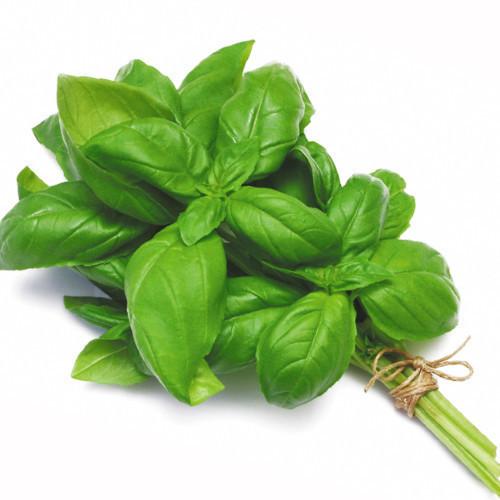
Oregano
Oregano is a must for Mediterranean-style vegetable soups. This hearty herb has a pleasantly warm, aromatic flavor profile. Even just a teaspoon can infuse your soup with aromatic notes.
Oregano works well for seasoning heartier soups with beans, tomato, zucchini, eggplant, and onion. It provides a wonderful savory quality. I like to add oregano at the beginning to allow the flavor to develop fully.
You can use either fresh or dried oregano, though fresh has a more pronounced flavor. To boost the flavor of dried oregano, toast the leaves briefly before adding to your soup.
Rosemary
With its pine-like aroma and woody flavor, rosemary is a great choice for hearty winter vegetable soups. It adds a unique enhancement that complements heartier veggies like potatoes, carrots, and parsnips.
The rich aroma of rosemary infuses soups with an extra layer of flavor. I like to add whole sprigs of rosemary while simmering soup, then remove them at the end. This infuses the broth without overpowering the other flavors.
Rosemary’s hearty flavor also makes it ideal for bean soups. Add some chopped rosemary to lentil or white bean soup for a savory aroma and taste. Just a small amount will go a long way.
Thyme
Thyme is one of my go-to herbs for vegetable soups. With its earthy, herbaceous flavor, thyme brings out the sweetness in aromatic vegetables like onions, carrots, and leeks.
I especially like to use thyme in potato soups, tomato soups, and autumn harvest-style soups with squash and root vegetables. The light woodsy notes complement the other flavors without taking over.
For best results, add thyme early in cooking for long, slow-simmering soups. But for quick cooking soups, add the thyme toward the end to preserve its aroma and flavor. A sprinkle of fresh thyme over the finished soup adds visual appeal as well.
Sage
While strong in flavor, sage offers a wonderful woodsy aroma and slightly bitter notes that enhance vegetable soups. It pairs especially well with autumn vegetables like squash, sweet potatoes and beans.
When using sage, restraint is important since it can quickly overwhelm. Use just 1/4 to 1/2 teaspoon of dried sage per pot of soup. For fresh sage, add 3-4 whole leaves while simmering, then remove after flavor infuses.
Sage brings out the earthy sweetness in winter squash soup. It also complements the richness of sweet potatoes and carrots. Just take care not to overdo it with this strongly flavored herb.
Parsley
Bright, fresh parsley adds vibrancy to vegetable soups. I love using it as a colorful, nutrition-packed garnish. But it also provides a flavor boost when stirred in.
The mild grassy flavor of parsley goes well with any veggies, especially potatoes, peas, carrots, tomatoes, and zucchini. Add chopped parsley just before serving so it retains its fresh, lively taste.
Curly or flat-leaf parsley both work well in soups. Flat leaf has an earthier flavor, while curly leaf offers more texture. Sprinkle on some extra parsley for a pop of green.
Cumin
Warm, earthy cumin is an ideal seasoning for hearty bean or lentil soups. Just a half teaspoon will enhance savory flavors and add subtle citrus notes.
Toasting the cumin seeds briefly before using them helps intensify their nutty, aromatic quality. Cumin’s flavor complements vegetables like carrots, onions, and cabbage. It adds Dimension and elevates the taste of mild veggies.
Try adding a dash of cumin to lentil soup or white bean vegetable stew. For the best flavor, add toasted or fresh ground cumin early in the cooking process so the flavor develops fully.
Coriander
Coriander may be best known as a garnish, but it also adds wonderful flavor to soups. The citrusy, slightly floral taste works well for freshening up vegetable medleys.
I especially like using coriander in small amounts with heavier root vegetables that need brightness, like potatoes, parsnips, or turnips. Just a quarter teaspoon can provide an uplifting note.
For optimum flavor, add the ground coriander toward the end of cooking. This helps preserve its volatile oils. A garnish of fresh coriander adds visual impact as well.
Try these Amazing Coriander Soup
Paprika
Paprika offers a range of flavors, from mild and sweet to hot and smoky. The mildly spicy taste and beautiful deep red hue make it a perfect addition to vegetable soups.
For hearty winter soups, a sprinkle of smoked Spanish paprika provides rich smokiness. Sweet paprika will add a mild touch of heat and vibrancy. Use chili powder or hot paprika to turn up the heat.
Paprika’s vibrant color looks beautiful sprinkled over lighter soups too. Try a pinch mixed into a carrot ginger soup or creamy tomato soup. Just be careful not to add too much, which can create a bitter taste.
Chili Powder
For those who like a little kick of heat, chili powder is an ideal blend of spices for vegetable soup. Combining chili peppers with ingredients like cumin, oregano, and garlic powder builds deep flavor.
The level of spiciness varies greatly by brand. Add it gradually and taste as you go to achieve the desired level of heat. I recommend starting with 1/4 teaspoon per 4-6 servings.
Chili powder nicely complements sweeter veggies like corn, carrots, and squash in the soup. Build depth of flavor by sautéing the chili powder briefly in oil before adding the vegetables. The heat will intensify upon simmering.
Other Amazing Soups Recipe
- Mary Berry Parsnip Soup
- Mary Berry Carrot and Parsnip Soup Recipe
- Mary Berry Carrot and Orange Soup
- Mary Berry Mushroom Soup
FAQs
What are some herb and spice combinations that go well together in vegetable soups?
There are endless tasty herb and spice combinations for vegetable soups!
Here are some of my favorite pairings:
- Basil, oregano, and garlic – This Italian-inspired trio brings bold flavor. Try in minestrone or tomato soup.
- Thyme, rosemary, and sage – For hearty winter soups, these woody herbs add comforting flavor.
- Curry powder, ginger, and coriander – Warm spices that complement carrots, sweet potatoes, and peas.
- Chili powder, cumin, and paprika – A southwest mix that adds heat and smokiness. Works well in bean or corn soups.
- Mint, parsley, and lemon – Bright herbs for lighter spring and summer soups. Lovely in chilled cucumber or melon soups.
The key is experimenting with different amounts of herbs and spices to find the perfect balance of flavors you enjoy. Start with small amounts and adjust to taste.
When should I add herbs and spices to vegetable soup?
The timing of when to add herbs and spices can make a big difference in flavor:
- Add woody herbs like thyme, rosemary, and oregano early in cooking so the flavors infuse into the broth.
- Save more delicate herbs like parsley, basil, and cilantro for the end so they retain vibrancy.
- Toast spices like cumin, coriander, and fennel briefly to intensify flavor before adding them to the soup pot.
- Add seasonings like garlic, chili powder, and paprika mid-way through cooking to mellow and blend flavors.
- Finish with a splash of lemon juice, vinegar, or fresh herb garnish right before serving for a pop of brightness.
Follow your taste buds – taste and adjust the seasoning as you go until the flavors are balanced and robust.
What are good veggie soup recipes to try these herbs and spices in?
Some of my favorite veggie soup recipes to showcase fresh herbs and spices include:
- Italian minestrone with basil, oregano, rosemary, and parmesan.
- Curried coconut lentil soup with coriander, cumin, and ginger.
- Southwest corn and bean chili with jalapeno, cumin, paprika, and cilantro.
- Creamy potato leek soup with thyme and sage.
- Moroccan carrot and chickpea soup with cumin, cinnamon and paprika.
- Fresh tomato basil bisque with garlic and parsley.
Conclusion
Herbs and spices make all the difference in vegetable soups. Start experimenting with new flavor combinations and see which ingredients you love. The options are endless!
Try making your own signature spice blends to liven up your soups. Building layers of flavor with herbs, spices, and aromatic vegetables results in a hearty, satisfying soup.

